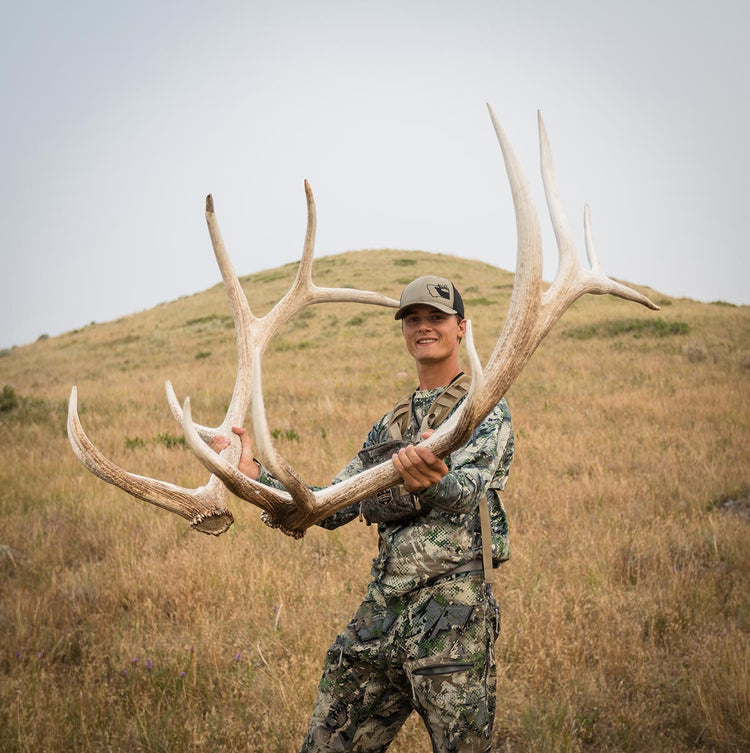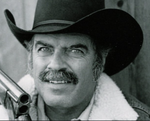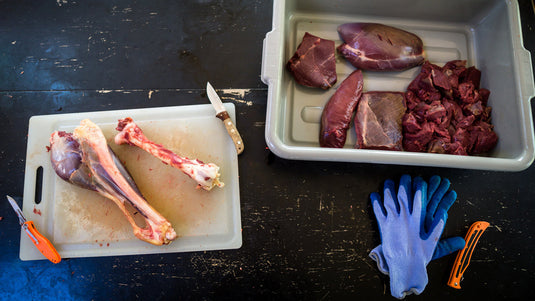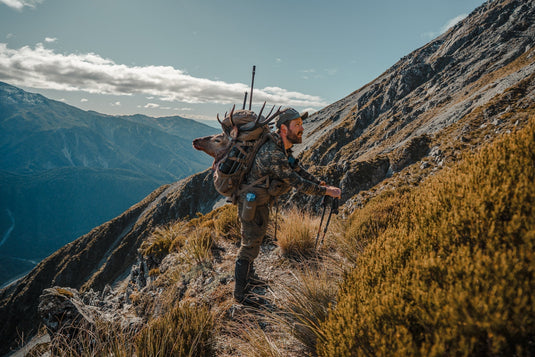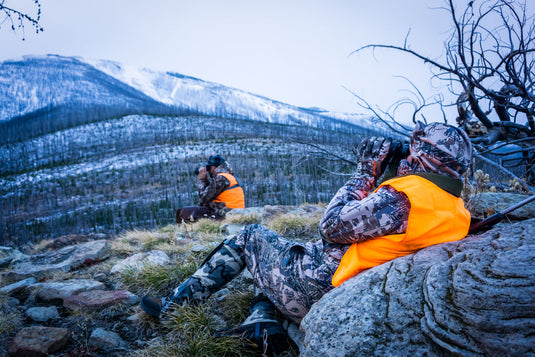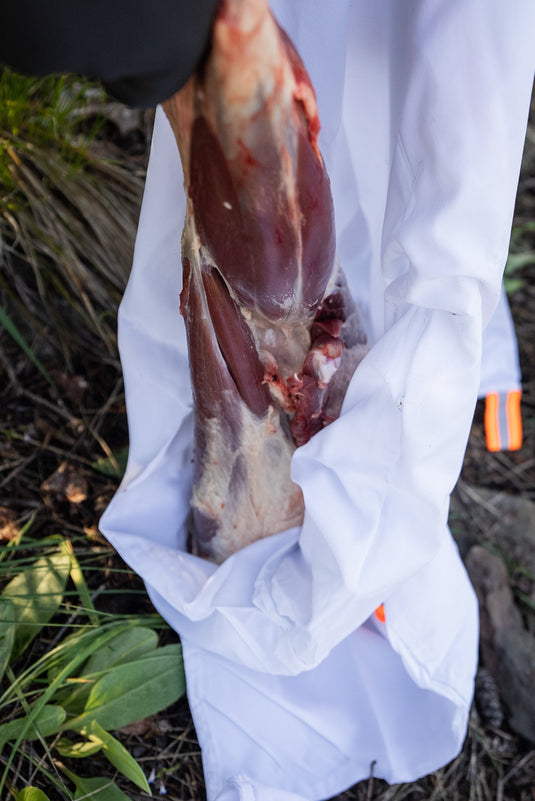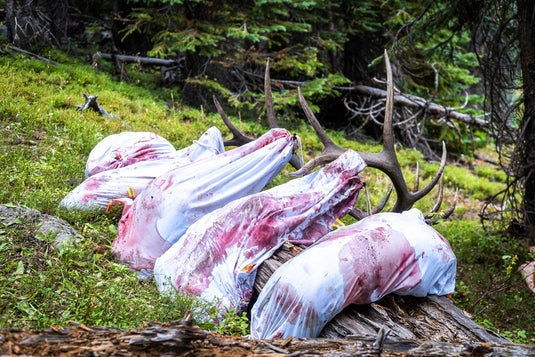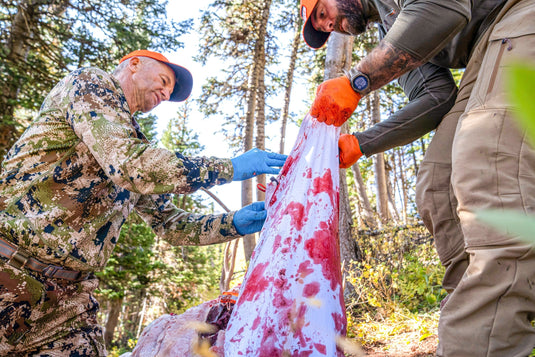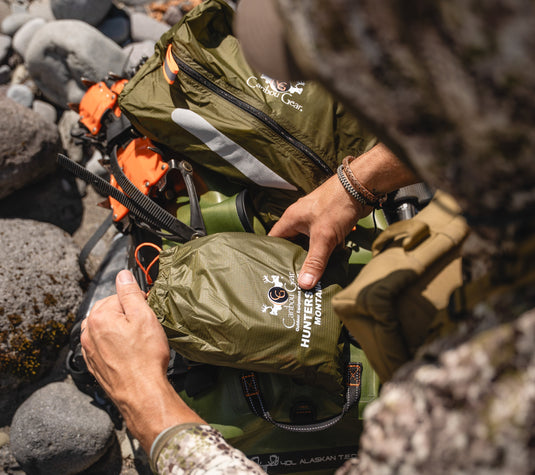Many deer and elk hunters consider antlers to be a major part of the pursuit. To others, antlers are important only to determine the legality of a buck or bull in areas where there are minimum antler tine restrictions. Hunters interested only in meat could care less about what the animal wears on its head. A cow elk or doe deer is most welcome. But those antlers have another value. Each year, in mid to late winter, all members of the deer family (all subspecies of deer, elk, moose and caribou) shed their antlers. The peak of the shedding season depends on the region. For example, bucks in Florida may shed at a different time than bucks in Texas.
Shed hunting has been growing in popularity for several reasons. One is simply the thrill of discovering an antler lying on the ground. To many, especially folks from more urban areas, this is a big deal. The antler will be cherished and perhaps displayed in their home. Hunters also use sheds as clues betraying the patterns of deer. The location of the shed tells the hunter that the buck was present in that spot in the winter. Perhaps the buck was the target animal that had been viewed via trail cams. The discovery of a particular shed may reassure hunters that the buck survived the season. Now that he’s minus his antlers the buck will hopefully be around next season with even larger antlers. Hunters who want to become familiar with deer behavior and habits in new country can get a good idea of the quality of bucks by locating sheds. Finally, sheds can be worth big bucks (pun intended). In fact, according to serious shed collectors, antler buyers paid more last year for antlers than ever before. Sit down while you read this. Elk antlers were going for $19.50 per pound. Ok, you say, how does that relate to the value of that antler. Consider this— the average weight of a single six-point antler from a mature bull is right at 10 pounds, give or take a pound. If you have the other antler, you have 20 pounds. Put a pencil to that figure. At $19.50 per pound you’re looking at right around $400 for one bull’s shed antlers. Not a bad piece of change for a hike in the woods. Now suppose you’ve stumbled into the mother of all shed areas and find several antlers. You might not make enough to buy a tricked-out bass boat but you might be able to purchase that nifty four-digit rifle you’ve been coveting. But that $19.50 is the very tops for the best quality antlers. Like furs, they’re graded by the buyer. If they’re fresh and nicely browned you should get top dollar. If you find a shed that’s been lying around in the sun for a year or more it will likely be bleached white. Those sheds will have a lesser value. Generally speaking, elk antlers are worth more than deer antlers, and moose antlers get top dollar — if you’re lucky enough to find any.
So why are antlers in such high demand? Here’s some history. Initially they were considered to be aphrodisiacs. That’s a big word that means the antlers are supposed to add virility and energy to those that consume them. The antlers are ground into a powder and added to a beverage. The powder commands very high prices. Now then, if buyers can get antlers that are in the velvet stage they’re believed to be much more potent and bring even higher prices. Of course, the velvet stage occurs when the antlers are growing. By the time hunting season rolls around the velvet is already gone, with the exception of some late summer hunts, especially bow seasons. Interestingly, elk are commonly raised in game farms where their antlers are removed during the velvet period.
Soon another market sprung up. Antlers were used to make lovely chandeliers, lamps, and all sorts of rustic items used in homes, even chairs and bed frames. But the demand for antlers changed for yet another use — doggie chews. Yes, you read that right. Antlers are cut up in pieces, placed in cute bags and boxes and sold in pet stores for a pretty penny.

Ok, so if you’re thinking about getting in on this bonanza, and I don’t blame you if you do — there are some things you need to know about hunting for antlers. If you live in a region of the country where there’s little public land you mind have a tough time finding a place to hunt for sheds. You might try state and federal wildlife management areas or refuges, but you’re apt to find plenty of competition from other shed hunters in states where there are few such public lands. There are several public land agencies in the US where you can hunt sheds with no permission necessary from landowners. The two major agencies are the US Forest Service within the US Dept. of Agriculture and the Bureau of Land Management (BLM) within the US Dept of Interior. The Forest Service administers around 190 million acres in the country with most of them in the west but there are several scattered around the US. The BLM administers about 250 million acres with almost all of it in the west. Though these are public lands where you can hunt for free, be aware that there may be restrictions on shed hunting in various states. For example, in Wyoming you cannot hunt sheds on any public lands from Jan 1 to April 31 on all land west of the Continental divide. There are no such restrictions on lands east of the divide. Another example. Montana offers excellent shed hunting on several WMA’s. In many you cannot hunt sheds after hunting season closes to May 14. Rules may vary with the area, so be sure to check regs. There are some areas in Montana that are so popular that hundreds of vehicles line up for the opener. When that time arrives there are vehicles tearing around hell bent for leather with anxious occupants looking intently for the prized antlers. There are reports of fistfights and even shootouts that were luckily averted because of the intense hunt. Why are there closures at all? Here’s what the Wyoming Game and Fish Department says: “the purpose of the seasonal closure is to minimize harassment or disturbance of big game animals on their winter and spring ranges when animals are most vulnerable to stress and displacement to less productive habitats.” In other words, shed collectors may actually harm animals by running them off the habitat they prefer to be on to areas which have less forage and cover. After surviving the winter, animals are weak. Pushing them around is not a good idea. In fact, some people will deliberately chase a herd of elk into a stand of timber, hoping that the bulls with strike their antlers on trees and branches, causing them to fall off. In my opinion this is unethical and uncalled for.
Before attempting to search an area for sheds you should have an idea where deer were in the winter when they dropped their antlers. For example, in the Maine woods deer often spend the winter in cedar swamps, especially if it’s a tough winter with deep snow and extreme cold. That’s where the sheds should be. This behavior holds true wherever there is some sort of migration, whether you’re considering deer, elk or moose.
In the west, mule deer and elk are champion migrators in many areas, often traveling a hundred miles or more to reach winter range after they’ve exited the high country where they spent spring, summer and early fall. That being the case, you’ll want to focus your efforts in lower elevations. Some elk herds seldom descend to the very lowest regions but will spend the winter in foothills where they feed on windblown ridges where the snow is blown away, exposing the grass which is preferred by the big animals.

Generally speaking, bull moose shed their antlers earliest - typically in December. Mule deer and whitetails in the west shed theirs by late January. Elk lose their antlers the latest, usually in March and early April. Often the largest animals lose their antlers first. A mature bull elk typically drops his antlers long before spike bulls. Because of the competition, shed hunters comb the woods thoroughly as soon as the snow allows access or the collecting season is open. By far the most successful hunters are those who ride horseback. Two reasons. One is that they can cover far more territory then a foot hunter, and the second is that a horseback rider is sitting high in the saddle and has much more visibility. Antlers lying on the ground are more easily spotted. Be aware that if you find one antler the matching set may be lying very close by. When a bull drops an antler his head is off balance. He may shake his head briskly or strike the antler on trees to get rid of the confounded thing. Nowadays dogs are trained to sniff out and retrieve antlers. This is done typically in whitetail country on farms and ranches. Fido becomes a valuable asset when he/she runs back to the owner with an antler!
The holy grail of all antler collecting is on the National Elk Refuge in Jackson Hole, Wyoming. There, upwards of 10,000 elk migrate to the refuge from the surrounding mountains and spend the winter there. They’re fed hay by the wildlife managers. Bulls drop their antlers on the refuge. Picture, if you will, thousands of antlers lying on the ground. What happens to them? Interestingly, the local Boy Scouts are allowed to help refuge employees gather the antlers and sell them. In the beginning the boys sold antlers and bought camping items for their troop. As the years passed and antler values increased, the money was donated to charities. Imagine a thief looking at those antlers from outside the refuge’s formidable fence, lusting for the money that could be made, and stealthily cutting a hole in the fence and retrieving some antlers. Sounds like an easy way to make money, right? Problem is, all those dudes get caught. I think the refuge must have one heck of a surveillance system! What happens to those antlers? The scouts and wildlife managers pick them up and store them in a locked facility until the second Saturday of May when they’re auctioned off to the public in Jackson’s town square. It’s a gala event, drawing folks from around the country as well as countries overseas. Shed antler hunting is just that- hunting, like hunting for wild asparagus or mushrooms. It’s a big thrill to find one, not just because you know you can make some money, but because that antler represents part of an animal that lives in the wild and may be around for years to come. Collecting is also a wonderful family activity. More and more Americans are discovering it every year.

